Pennsylvania’s hills and riverbanks have been hiding carnelian for centuries. This deep orange-red gemstone, loved for its fiery glow, can be found in places most rockhounds overlook.
The state’s ancient glacial deposits and winding streams have scattered carnelian in unexpected spots, making the hunt both challenging and exciting.
Many rockhounds struggle to find good collecting sites. They often search in the wrong places, wasting time and energy without results. Knowing where to look makes all the difference.
This guide will help you find the best carnelian spots in Pennsylvania. We’ve done the research so you can spend less time searching and more time collecting.
How Carnelian Forms Here
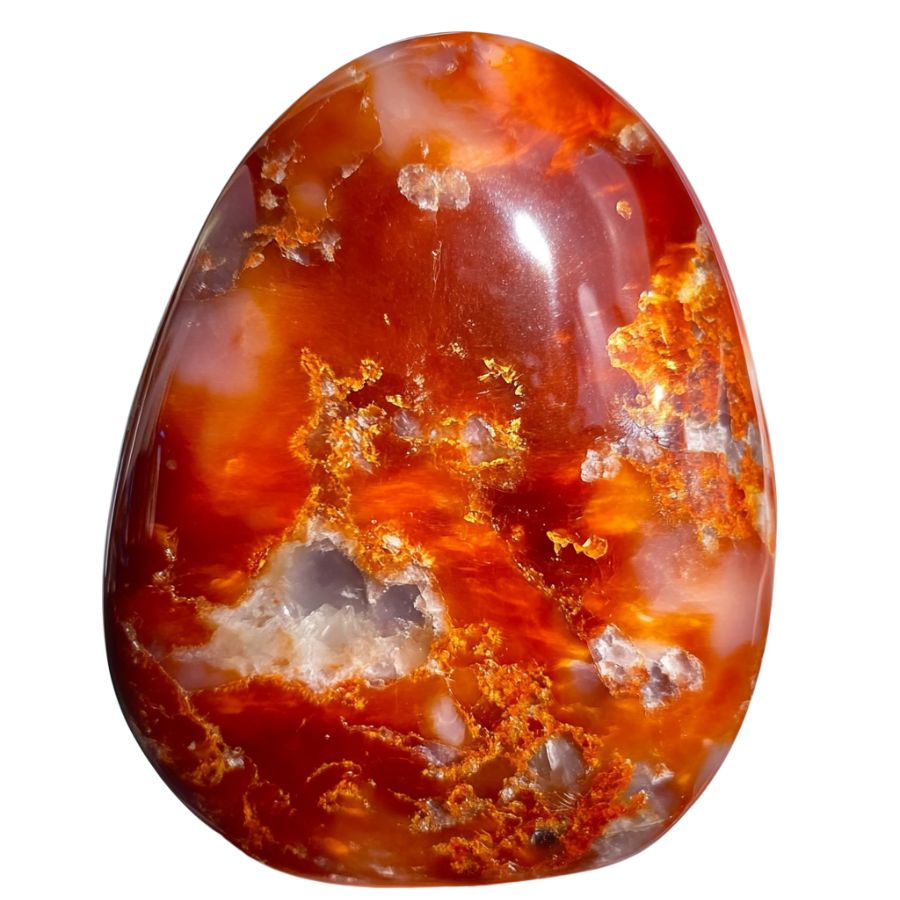
Carnelian forms when silica-rich fluids seep into volcanic rocks and slowly crystallize. It starts as chalcedony, a type of quartz, but gets its reddish-orange color from iron oxide impurities.
The process happens deep underground where hot water carries dissolved minerals through cracks and cavities in volcanic rocks. Over millions of years, as the liquid cools and pressure changes, the silica molecules line up to form tiny, fibrous crystals.
The more iron present during formation, the deeper the red color becomes. Sometimes, you can even see bands or zones in the stone where different amounts of iron were present during different stages of formation.
Types of Carnelian
Carnelian comes in a fascinating range of colors. From vibrant reds to deep blacks, these natural variations occur due to different concentrations of iron oxide and varying formation conditions. Let’s explore the unique features of each color variety.
Red Carnelian
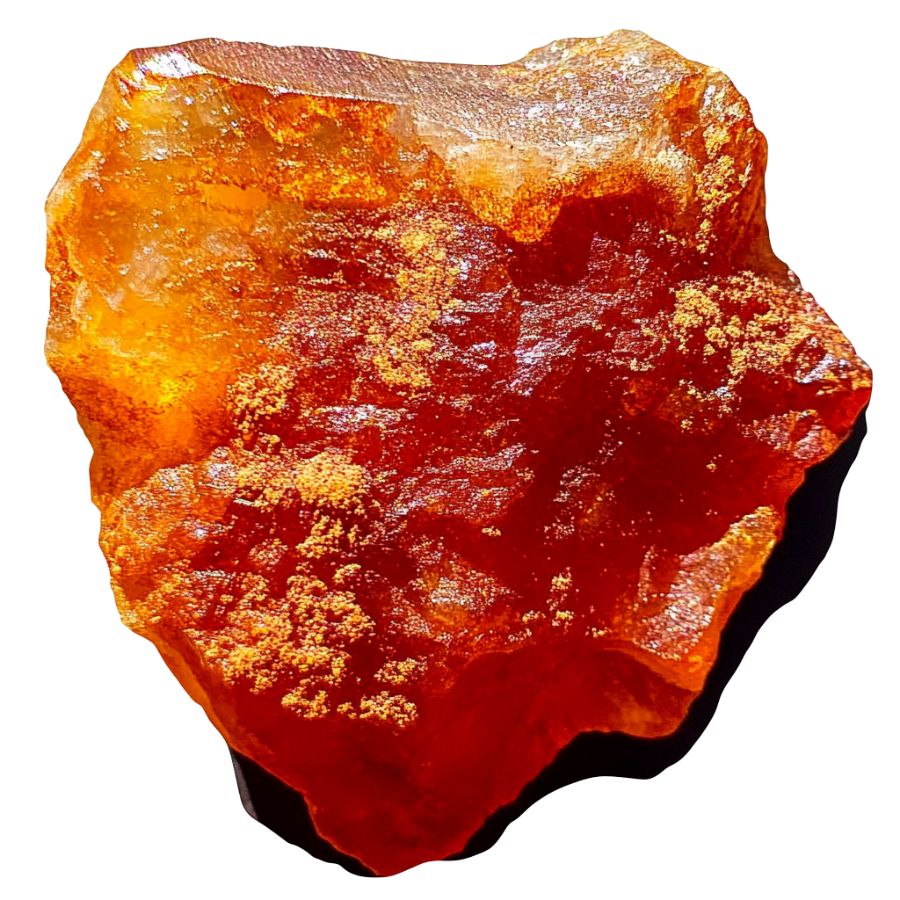
Red Carnelian displays vibrant warm colors ranging from light orange to deep reddish-brown. Its surface has a glass-like shine and can be either see-through or solid.
What sets Red Carnelian apart is its perfect and even coloring. Unlike other similar stones, it rarely shows any stripes or patterns. Instead, it has a smooth, consistent appearance that makes it stand out.
The stone’s microscopic crystal structure gives it an especially glossy finish when polished.
When examining Red Carnelian, you’ll notice it has a special way of breaking – it forms smooth, curved surfaces rather than straight lines. This quality helps craftspeople shape it into various forms while maintaining its natural beauty.
Orange Carnelian
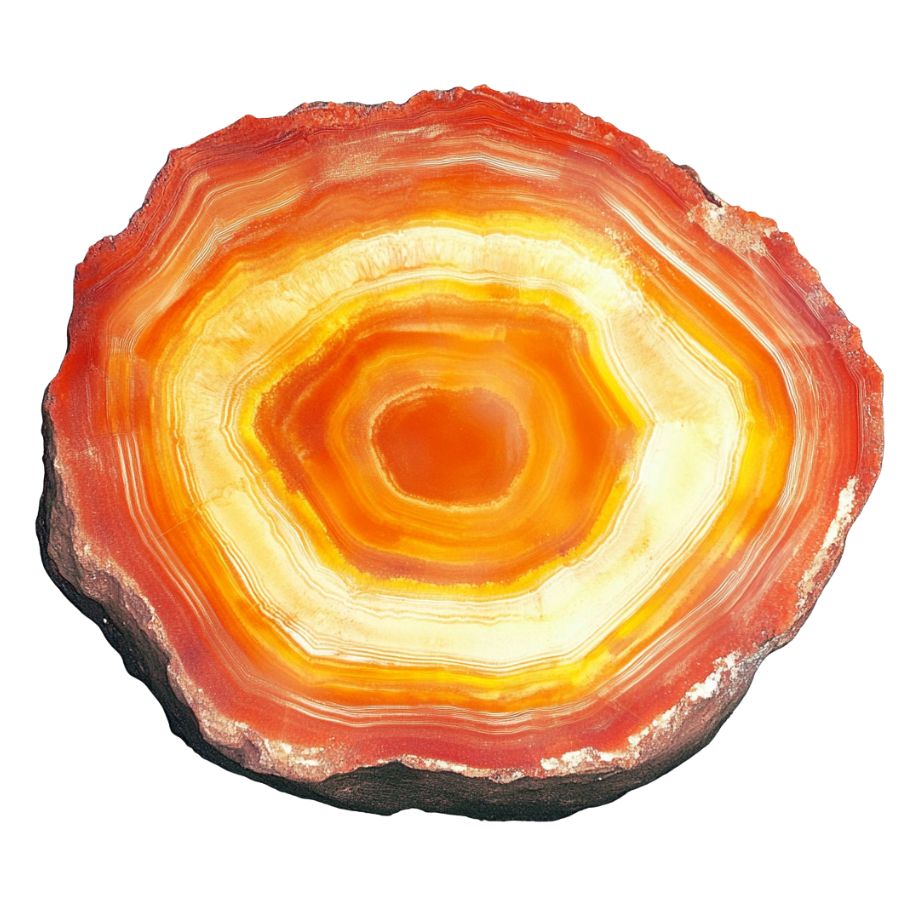
Orange Carnelian showcases bright, sunny colors from light orange to peachy hues. This stone often shows warm, honey-like tones that seem to glow from within.
The stone’s internal structure is made up of tiny quartz crystals packed tightly together. This arrangement gives Orange Carnelian its distinctive appearance and makes it respond beautifully to polishing.
The most sought-after pieces of Orange Carnelian show bright, vivid orange colors without any cloudy areas or dark spots. These specimens have a particularly attractive glow and maintain their vibrant appearance in various lighting conditions.
Additionally, carnelian’s versatility allows it to be fashioned into various shapes and sizes, including cabochons, beads, and carvings, making it a favorite among rockhounds and gemstone enthusiasts.
Pink Carnelian
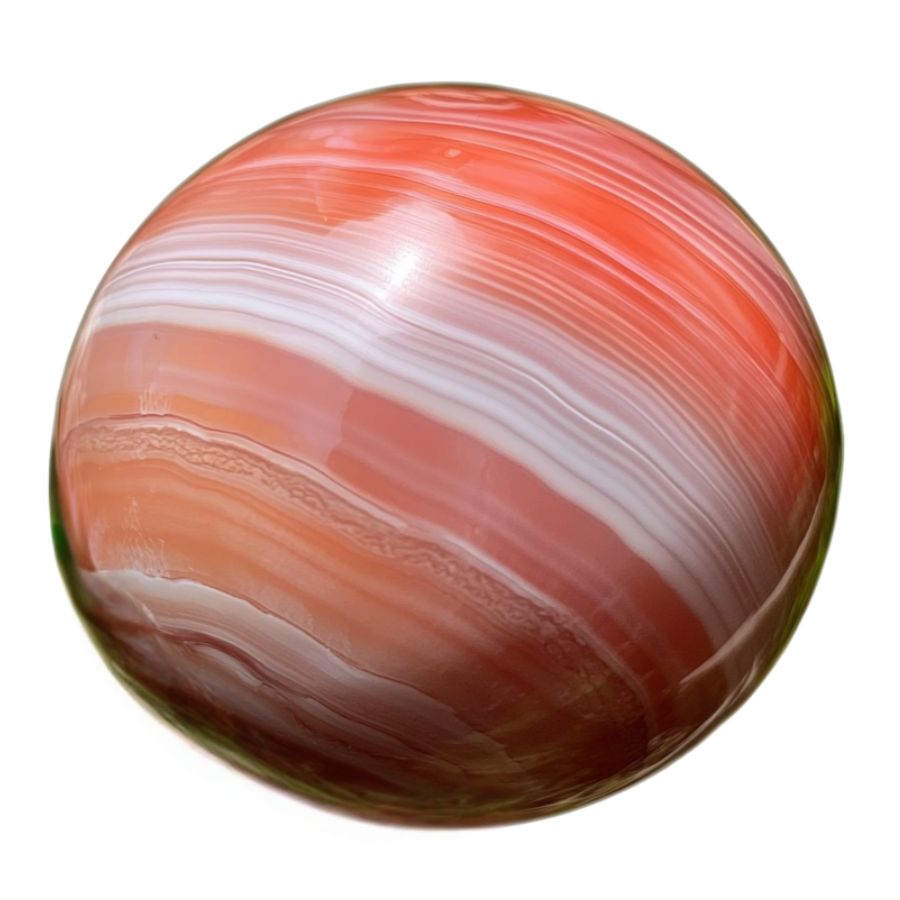
Pink Carnelian is a unique variety of carnelian, distinguished by its opaque pink hue. This coloration arises when the red hues of typical carnelian do not fully develop, resulting in a softer, pastel appearance. The stone can also exhibit a translucent quality.
So traditional carnelian ranges from bright orange to deep reddish-brown, pink carnelian, on the other hand, is characterized by its lighter, pastel pink shades.
Additionally, the stone often appears slightly cloudy, which adds to its gentle appearance.
The stone’s surface can be polished to a high shine, which enhances its natural beauty. The most desirable specimens show an even, consistent pink color throughout and maintain their attractive appearance under various lighting conditions.
Yellow Carnelian
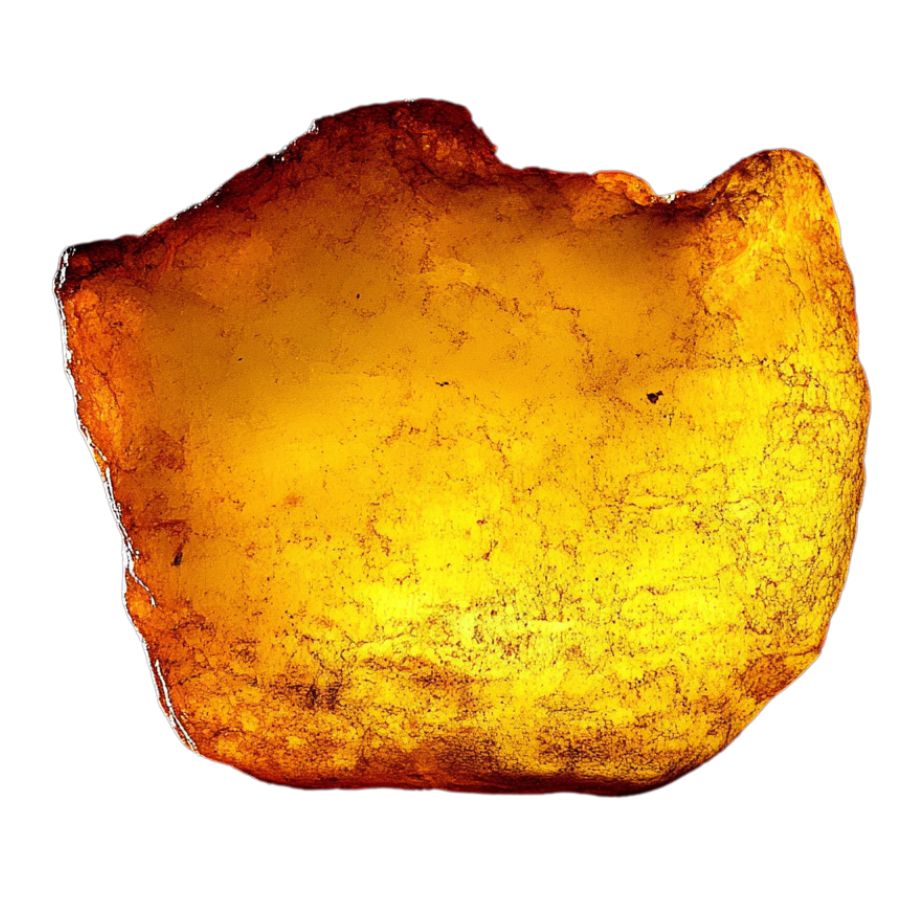
Yellow Carnelian exhibits warm amber to golden-yellow colors that can sometimes blend into honey-orange tones. Its appearance resembles sunlight captured in stone, with a natural glossy surface. The color can vary from pale butter yellow to deep golden hues.
Unlike its orange and red relatives, Yellow Carnelian often shows subtle color variations within the same piece. These variations create gentle transitions between lighter and darker areas, giving the stone a unique depth.
Some specimens display interesting light effects, appearing almost luminous when light passes through them.
The most prized Yellow Carnelian pieces show clear, bright yellow colors without any muddy or brownish undertones. Some specimens might display subtle translucency at their edges, adding to their visual appeal.
Brown Carnelian
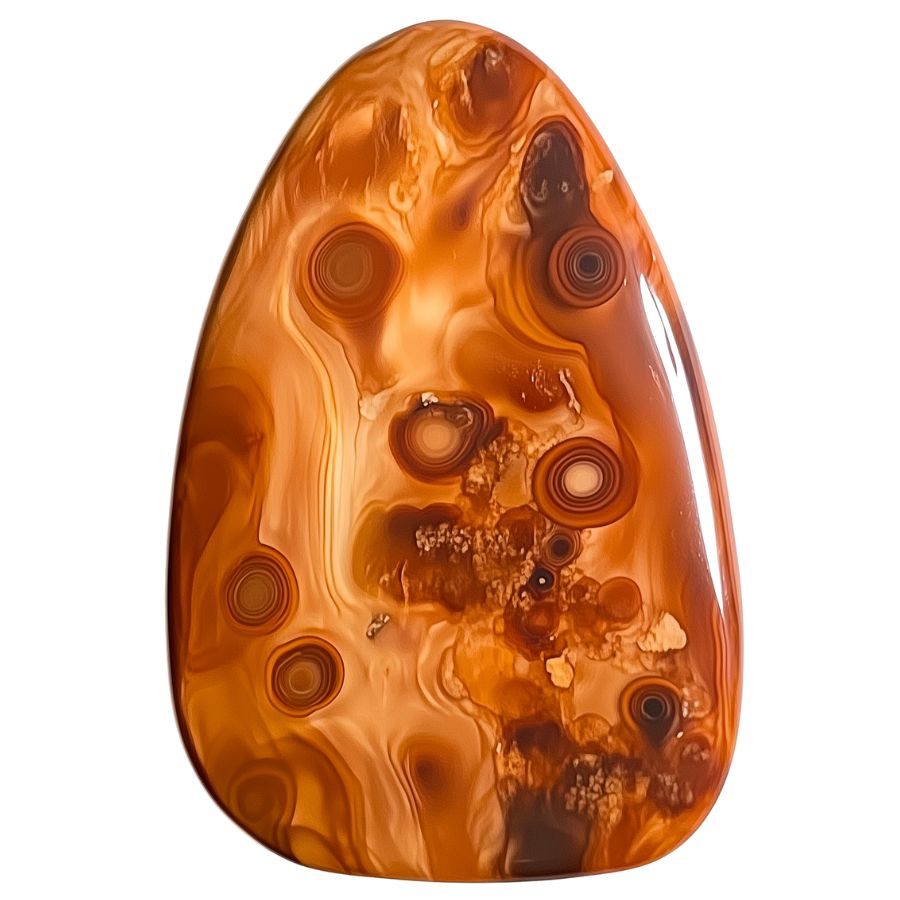
Brown Carnelian displays rich earthy tones ranging from warm chocolate to russet brown. The rich browns come from high concentrations of iron oxide mixed into the stone.
The stone’s surface is remarkably smooth and even. While similar stones often show stripes or bands, Brown Carnelian typically has a consistent coloring throughout. This gives it a distinct appearance that stone enthusiasts particularly appreciate.
Brown Carnelian differs from Sard, another type of chalcedony, primarily in color and hardness. Sard is generally darker and harder than Carnelian, which is softer and exhibits lighter shades
One fascinating aspect is its natural polish quality. The stone’s structure allows it to achieve an exceptional shine with minimal processing.
Black Carnelian
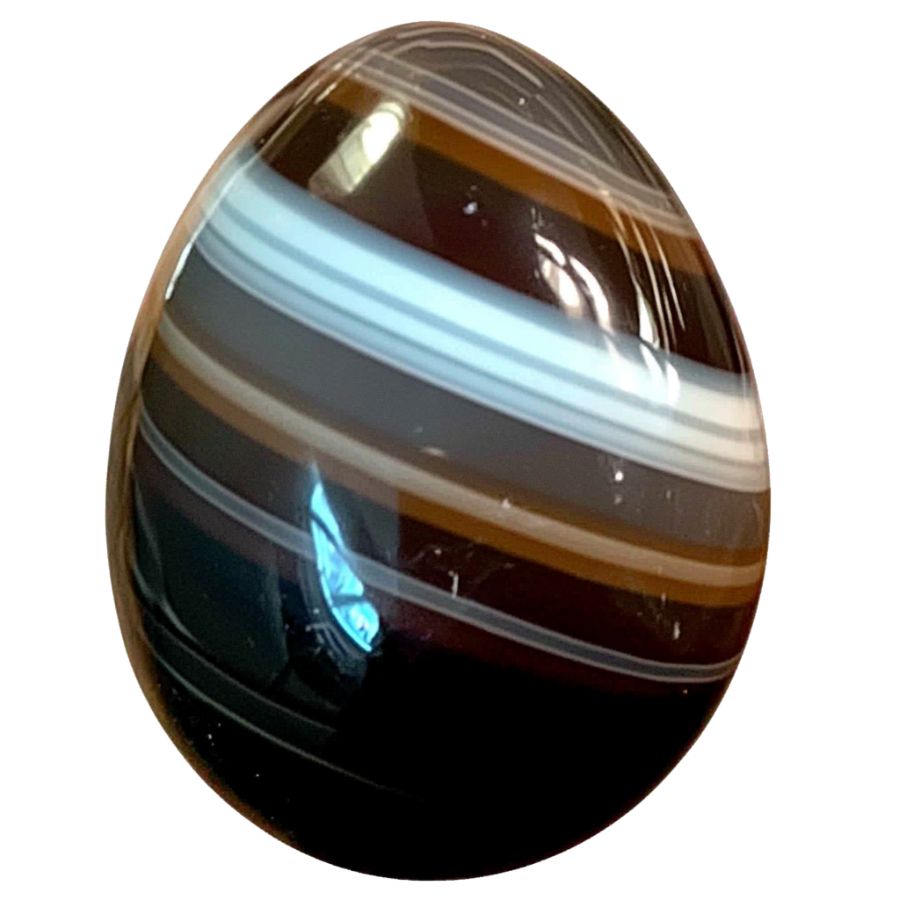
Black Carnelian shows deep, intense coloring ranging from the darkest brown to nearly pure black. The color comes from unusually high amounts of iron minerals in the stone.
Unlike standard carnelian, which typically exhibits hues of orange and red, Black Carnelian’s color is more opaque, lacking the translucence often seen in lighter varieties.
Its surface has special optical properties that create an almost metallic look when polished. The stone’s dense composition allows it to take an exceptionally high polish, bringing out subtle variations in its dark coloring.
Some specimens develop interesting patterns where extremely dark areas contrast with slightly lighter zones. These natural variations add character to each piece, making every stone unique and collectable.
Green Carnelian
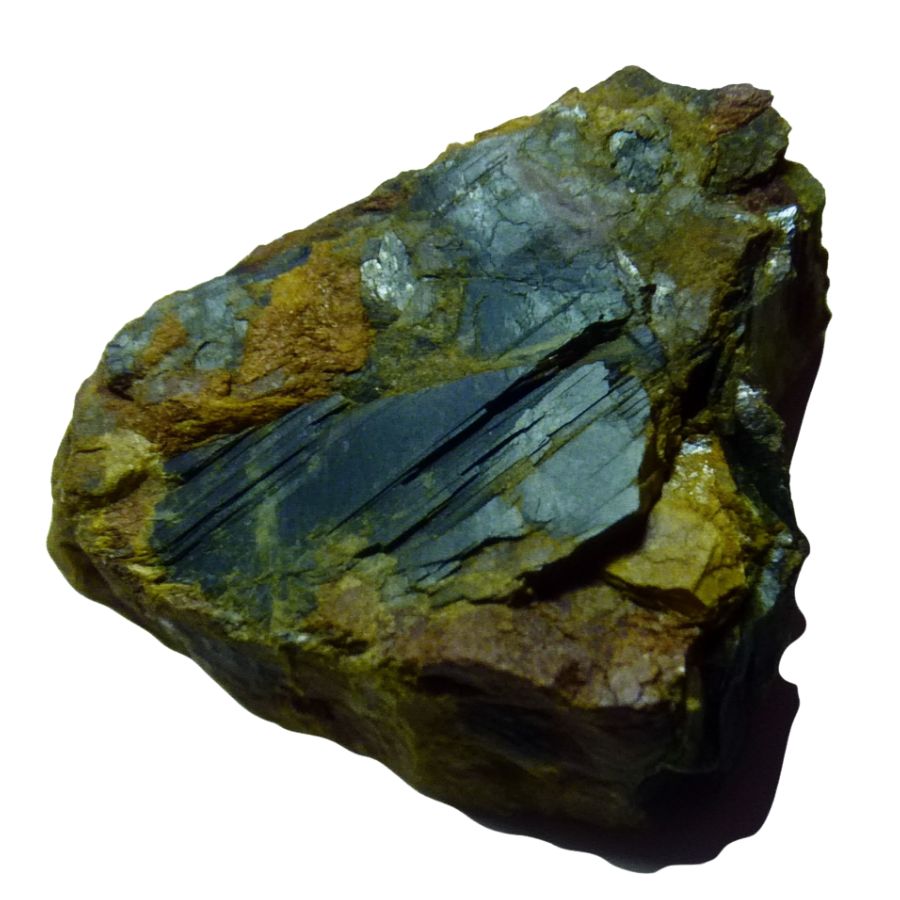
Green Carnelian shows an unusual earthy green color that can range from sage to forest green tones. The stone has a smooth, silky appearance with a natural sheen that becomes more prominent after polishing.
The stone’s texture is particularly noteworthy. Unlike the glassy appearance of other carnelians, Green Carnelian often has a more subdued, velvety look. This gives it a unique character that appeals to collectors who appreciate subtle beauty.
Green Carnelian is not as commonly found as its red or orange counterparts. It has been historically used in jewelry and decorative items due to its attractive color and durability.
Ancient civilizations valued it for its aesthetic appeal and used it in various decorative arts. It is resistant to scratches and suitable for everyday wear in jewelry.
What Rough Carnelian Look like?
Carnelian in its rough form can be tricky to identify, but once you know what to look for, it becomes much easier. Here’s how to spot this beautiful reddish-orange stone in its natural state.
Look for the Distinctive Color Range
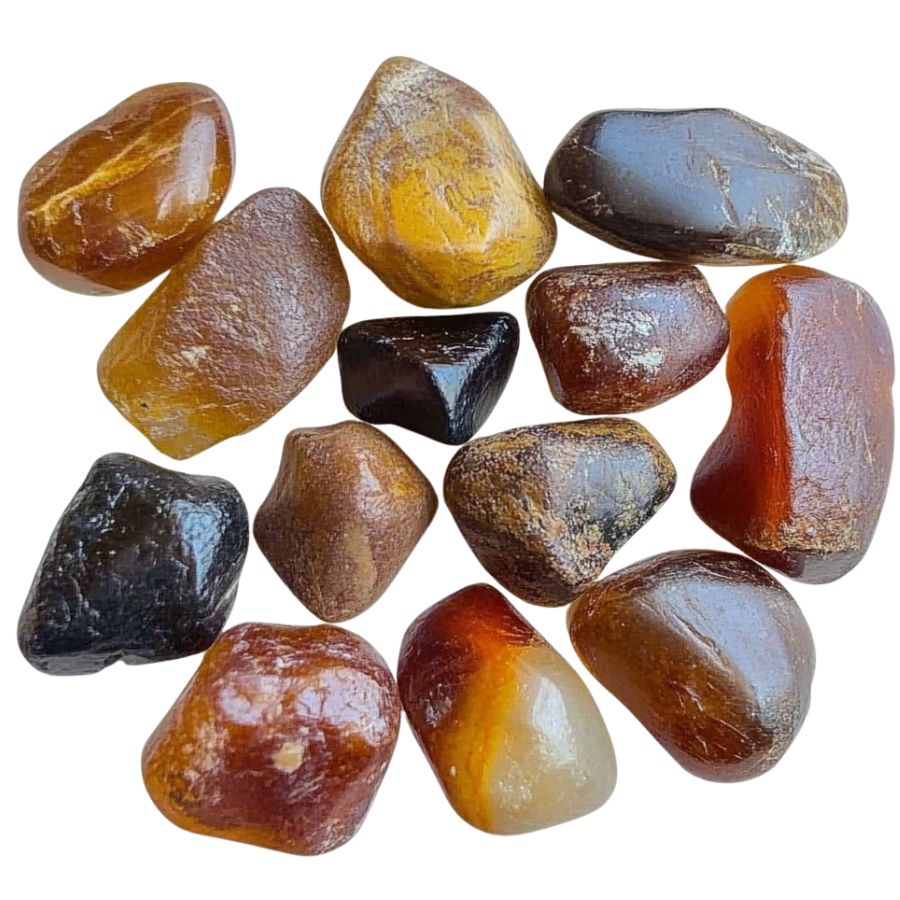
Raw carnelian typically shows up in warm, earthy shades. Look for colors ranging from light orange to deep reddish-brown. Sometimes, you’ll spot honey-brown or even yellowish patches.
Unlike other orange stones, carnelian often has a cloudy or slightly translucent quality. The color usually isn’t uniform; you might see banding or swirling patterns.
Check for the Waxy-Glass Look
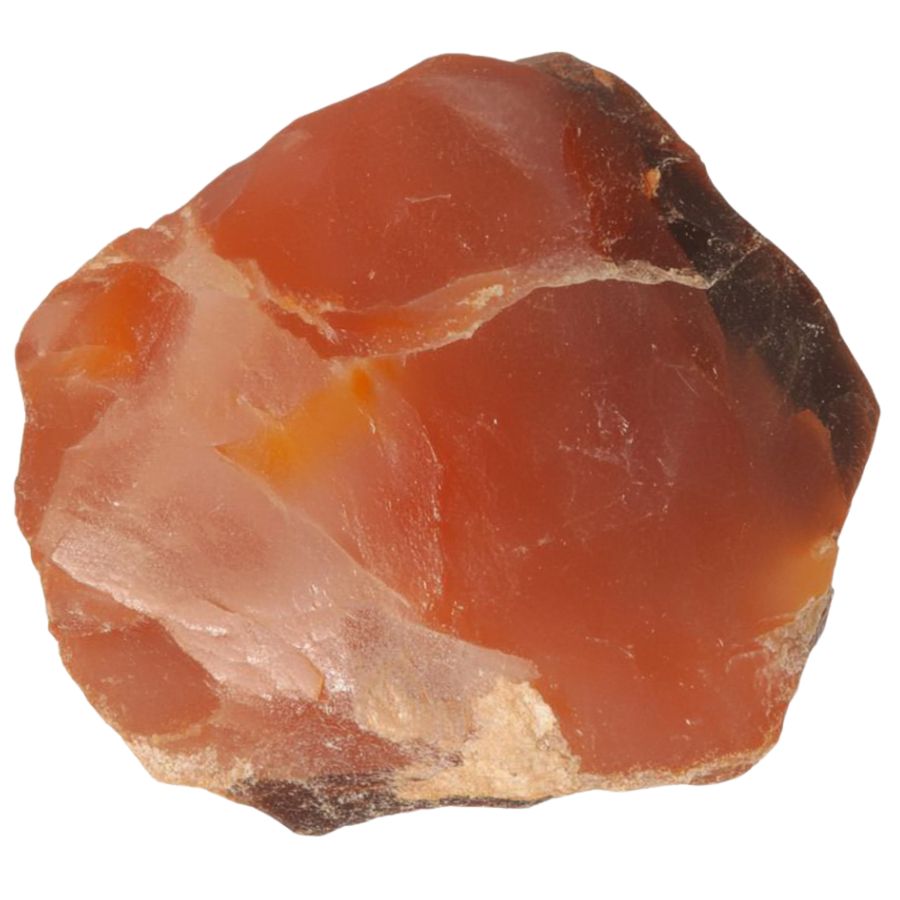
Here’s a dead giveaway – carnelian has this unique luster that’s somewhere between waxy and glassy. Hold it up to light; it won’t be completely transparent like glass, but light should pass through the edges.
Fresh breaks in the stone will show a more glassy appearance. If it’s too dull or completely opaque, it’s probably not carnelian.
Assess the Hardness and Texture
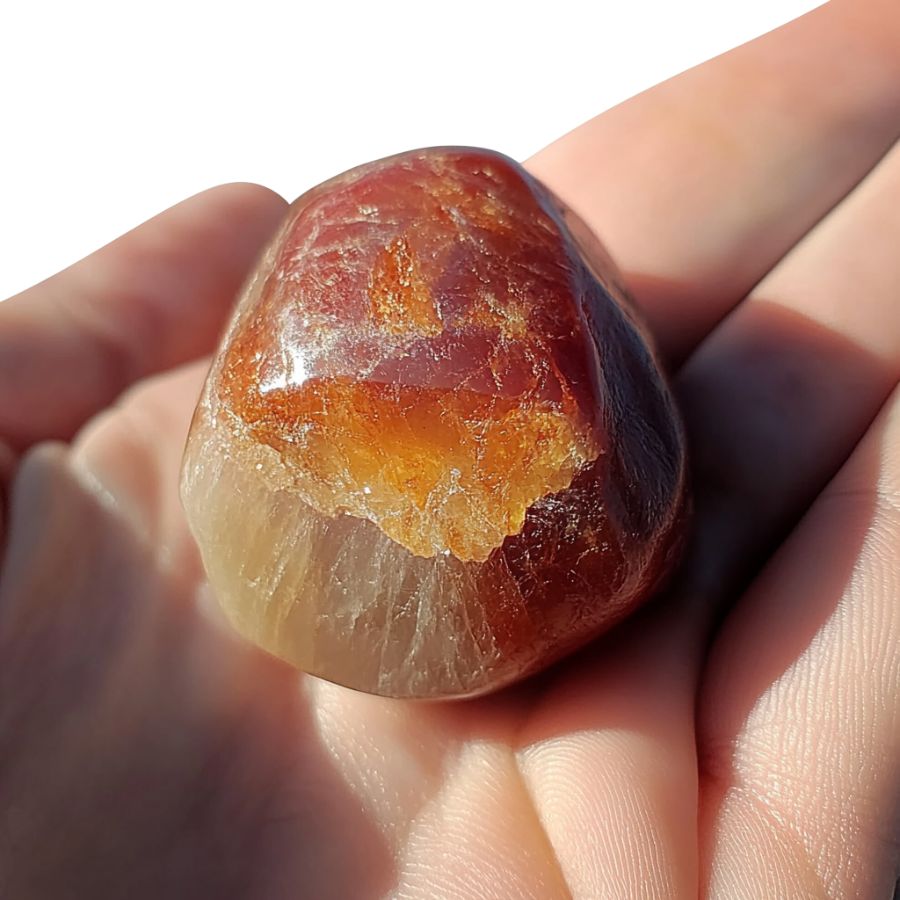
Try this: run your fingernail across the surface. Can’t scratch it? Good sign! Carnelian ranks 6.5-7 on Mohs scale. The surface should feel smooth but not slippery.
Unlike jasper (which it’s often confused with), rough carnelian has a more uneven, conchoidal fracture – think broken glass patterns.
Test the Temperature Feel
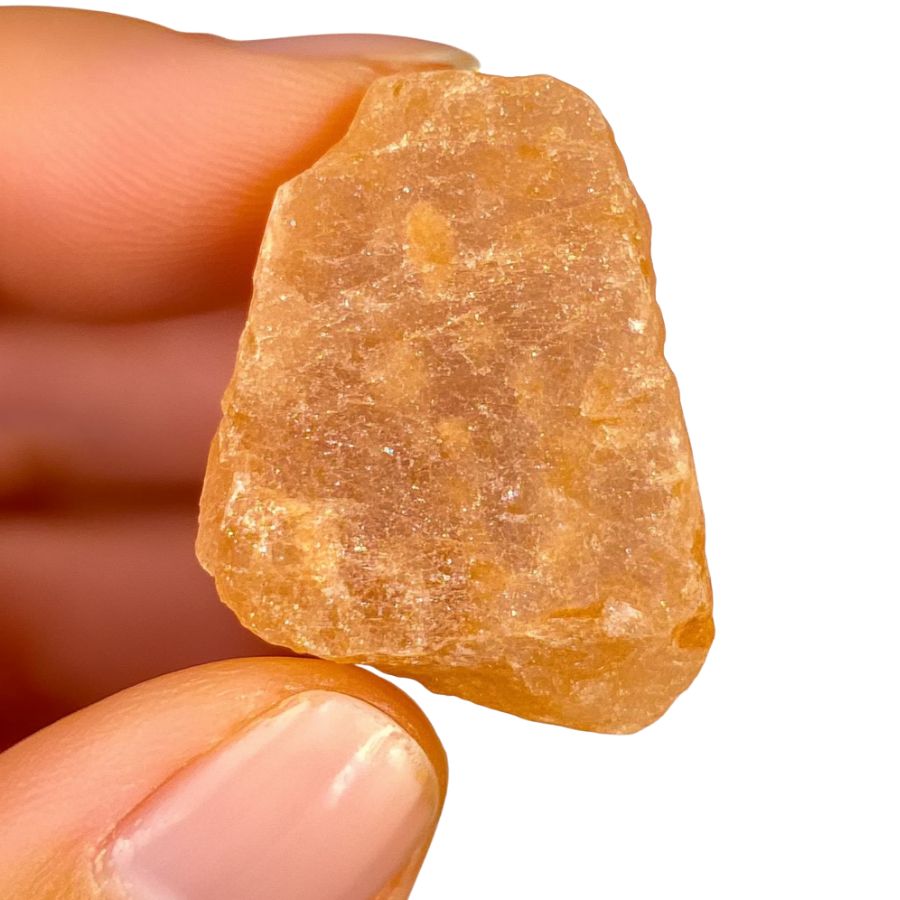
Pick up the stone and hold it for a moment. Carnelian typically feels cool to touch initially but warms up quickly. Unlike plastic imitations, it maintains a natural temperature gradient.
It shouldn’t feel unnaturally light or plasticky – there’s a solid, satisfying weight to genuine carnelian.
A Quick Request About Collecting
Always Confirm Access and Collection Rules!
Before heading out to any of the locations on our list you need to confirm access requirements and collection rules for both public and private locations directly with the location. We haven’t personally verified every location and the access requirements and collection rules often change without notice.
Many of the locations we mention will not allow collecting but are still great places for those who love to find beautiful rocks and minerals in the wild without keeping them. We also can’t guarantee you will find anything in these locations since they are constantly changing.
Always get updated information directly from the source ahead of time to ensure responsible rockhounding. If you want even more current options it’s always a good idea to contact local rock and mineral clubs and groups
Tips on Where to Look
Carnelian is a common stone that forms in various geological settings. Here’s where you can typically find this reddish-orange beauty without traveling too far.
Sedimentary Rock Formations
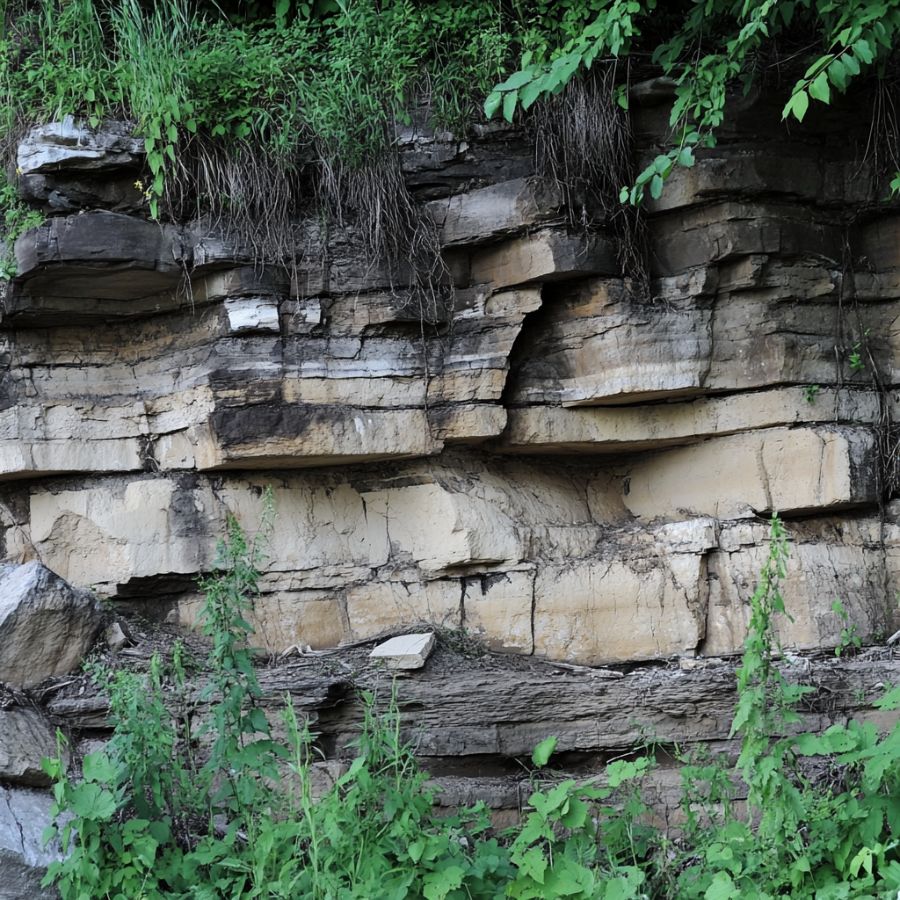
Look for areas with lots of sedimentary rocks, especially sandstone and limestone. Carnelian often forms in these layers through mineral replacement.
Focus on eroded cliff faces and exposed rock walls where water has carved through layers over time, revealing hidden deposits of carnelian that might have formed within these sedimentary beds through centuries of mineral-rich water seepage.
River Beds and Creek Banks
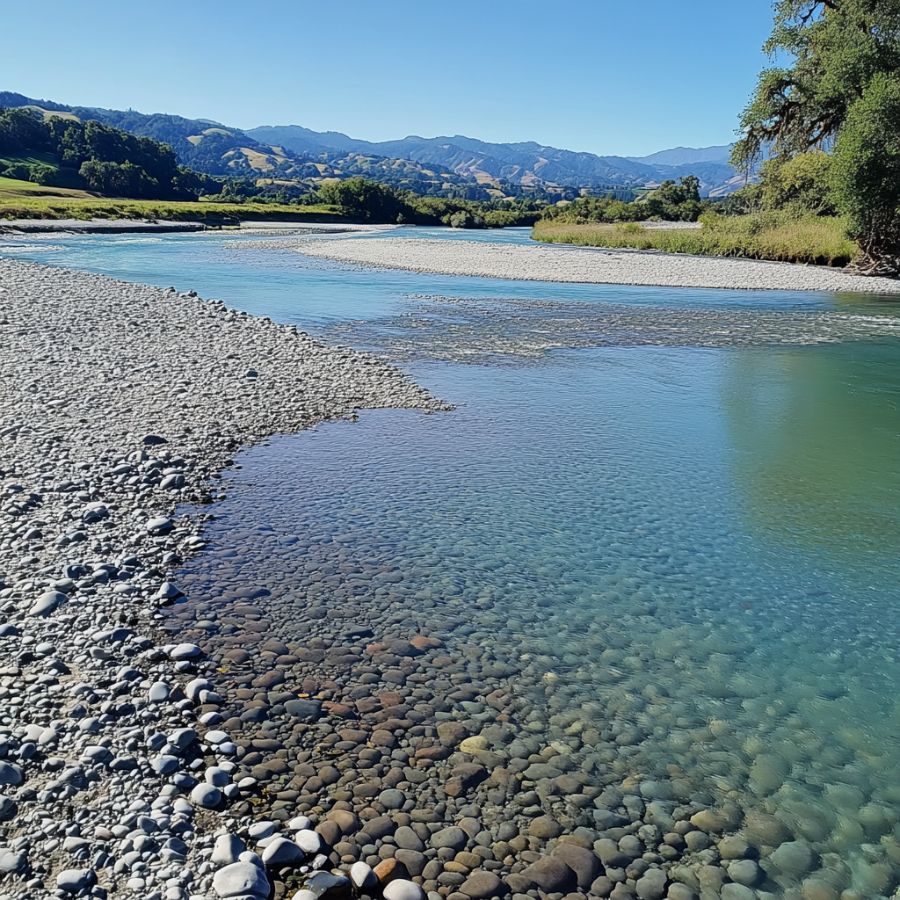
Check gravel beds in rivers and creeks, particularly after heavy rains when new material gets exposed.
Scan areas where water slows down – like bends in the river or behind large rocks – as heavier stones like carnelian tend to settle there. Dig about 6-12 inches into the gravel, as larger pieces often sink deeper.
Desert Areas
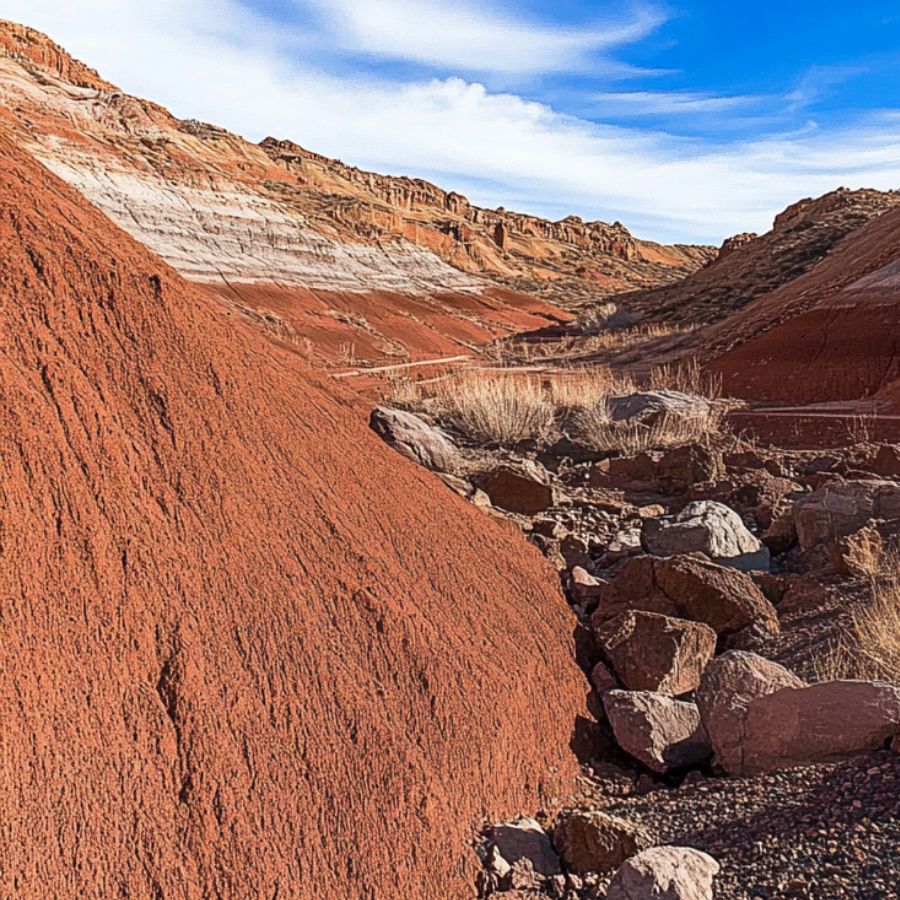
Search desert regions with scattered rock formations and plenty of agate deposits. Desert varnish (that dark coating on rocks) often indicates the presence of mineral deposits, including carnelian.
Look especially where you spot reddish or rusty staining on rocks, as iron oxide – which gives carnelian its color – is usually present in these areas.
Old Mining Sites
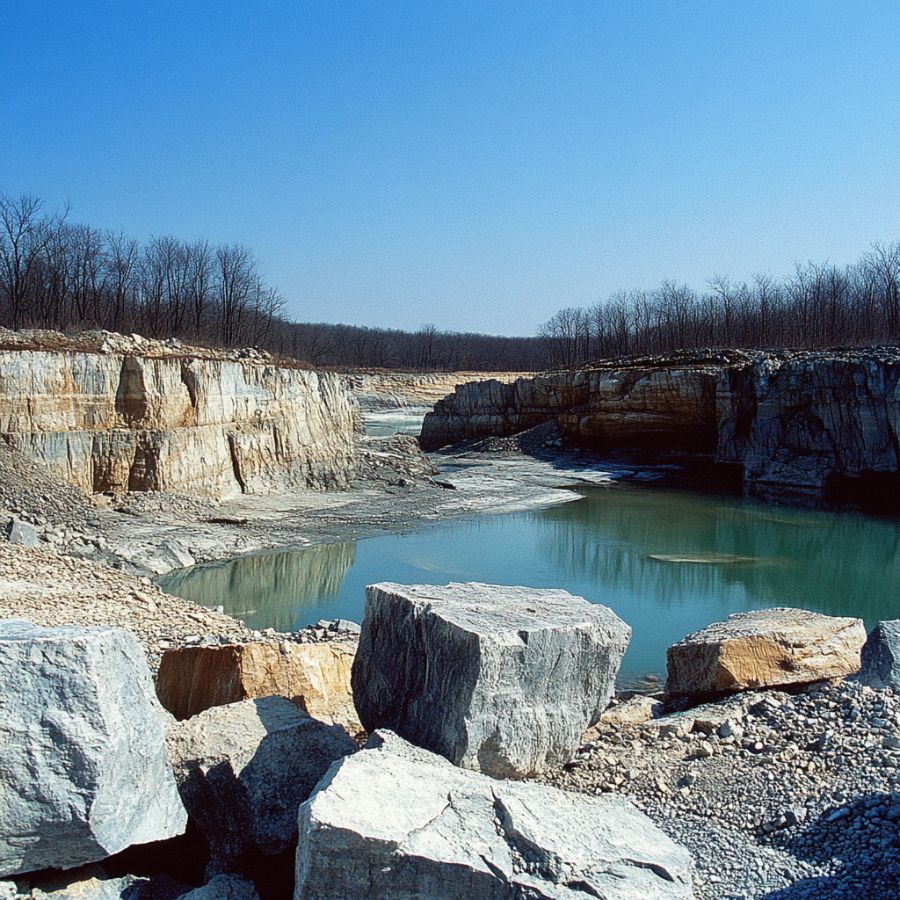
Visit abandoned quarries that were once mined for agates or jasper. While staying within permitted areas, examine the tailings piles (discarded rock material) where miners might have overlooked smaller pieces.
Carnelian sometimes occurs alongside these other chalcedony varieties, and the exposed rock faces in quarries can reveal veins or nodules containing this semi-precious stone.
Some Great Places To Start
Here are some of the better places in the state to start looking for Carnelian:
Always Confirm Access and Collection Rules!
Before heading out to any of the locations on our list you need to confirm access requirements and collection rules for both public and private locations directly with the location. We haven’t personally verified every location and the access requirements and collection rules often change without notice.
Many of the locations we mention will not allow collecting but are still great places for those who love to find beautiful rocks and minerals in the wild without keeping them. We also can’t guarantee you will find anything in these locations since they are constantly changing.
Always get updated information directly from the source ahead of time to ensure responsible rockhounding. If you want even more current options it’s always a good idea to contact local rock and mineral clubs and groups
Broomall

Broomall has long been a hidden gem for rockhounds seeking colorful finds. The region’s geology features weathered metamorphic rock and ancient riverbeds, creating a perfect setting for carnelian to form.
Head to local creek beds and exposed rock outcrops near Darby Creek. Searching after heavy rainfall can reveal freshly uncovered specimens.
Look for smooth, reddish-orange stones mixed with gravel, especially in areas where erosion is active. Carnelian often hides among quartz and jasper deposits, so keep an eye out for its signature warm hues.
Rock Springs Run

Tucked away in Fulton Township, Rock Springs Run is a prime destination for rockhounds searching for carnelian. This area, known for its rich iron-bearing sediments, has produced deep orange and reddish carnelian nodules over time.
The best place to search is along the stream banks, where flowing water gradually uncovers carnelian deposits. Try sifting through gravel bars and inspecting areas where water slows down, as these spots tend to collect heavier minerals.
Spring and early summer are the best seasons to visit, as water levels tend to be lower, exposing more rocks. A sturdy pair of boots, a sifting pan, and patience will go a long way in uncovering some of Pennsylvania’s most beautiful carnelian pieces.
Ringtown Valley

Ringtown Valley’s geology consists of sedimentary deposits rich in quartz and iron oxides, which contribute to the formation of carnelian. Over time, weathering has released these stones into nearby streambeds, where collectors can find them today.
Exploring the Little Catawissa Creek and surrounding tributaries can yield small but striking carnelian specimens. The best strategy is to look along the water’s edge, especially in areas where the current has eroded the banks.
Carnelian here often appears in tumbled, water-worn pebbles, glowing red or orange in the sunlight.
If you’re lucky, you might also stumble upon jasper, chalcedony, or even small quartz geodes while hunting for carnelian.
Cornwall

Famous for its iron ore mining history, Cornwall in Lebanon County is also a hotspot for rockhounds seeking unique minerals. The same iron-rich deposits that fueled the Cornwall Iron Mines have also contributed to the formation of carnelian in the area. While large deposits are uncommon, careful searching can yield rewarding finds.
The best places to explore are near old mining areas and exposed rock faces where iron-bearing minerals were once extracted. Look for reddish, waxy-textured stones in loose gravel and tailings piles.
The presence of hematite and jasper in the area increases the likelihood of finding carnelian, as they often form under similar conditions.
Harrisburg Area
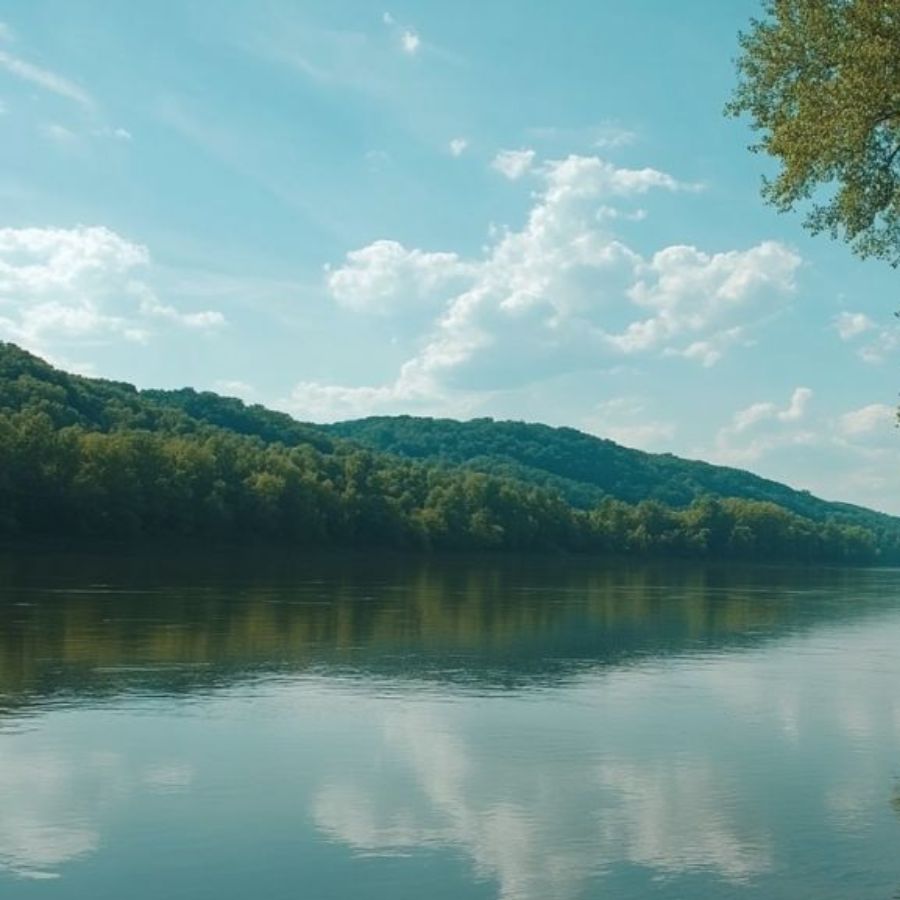
As Pennsylvania’s capital city, Harrisburg may not seem like a rockhounding destination at first glance, but the surrounding countryside offers exciting opportunities for gemstone hunters.
The region’s diverse geological history includes metamorphic rock formations and ancient river systems, creating an environment where carnelian can occasionally be found.
Head to the Susquehanna River banks and gravel beds, especially after heavy rains. The river’s powerful currents unearth carnelian pebbles, along with other semi-precious stones like jasper and agate.
Searching in shallow water with a pan or sieve can help reveal bright orange-red stones hidden beneath the sediment.
Places Carnelian has been found by County
After discussing our top picks, we wanted to discuss the other places on our list. Below is a list of the additional locations along with a breakdown of each place by county.
| County | Location |
| Berks | Flint Hill |
| Berks | Dyer Gibraltar Quarry |
| Berks | Grace Mine |
| Berks | Jones Mine |
| Berks | Fritz Island Mine |
| Berks | Boyertown Mines |
| Berks | Eastern Industries Quarry |
| Berks | Dyer Trap Rock Quarry |
| Berks | Wheatfield Mine |
| Berks | Route 222 Road Cut Locality |
| Berks | Udree Mine |
| Berks | Seitzinger Mine |
| Berks | Antietam Dam |
| Berks | Flint Hill |
| Berks | Hawk Mountain Sanctuary area |
| York | Rossville Road Cut |
| Chester | French Creek State Park area |
| Chester | East Branch Brandywine Creek |
| Carbon | Hickory Run State Park area |
| Columbia | Centralia Coal Mine Fire area |
| Clinton | Red Hill Fossil Site |
| Lackawanna | Jessup |


